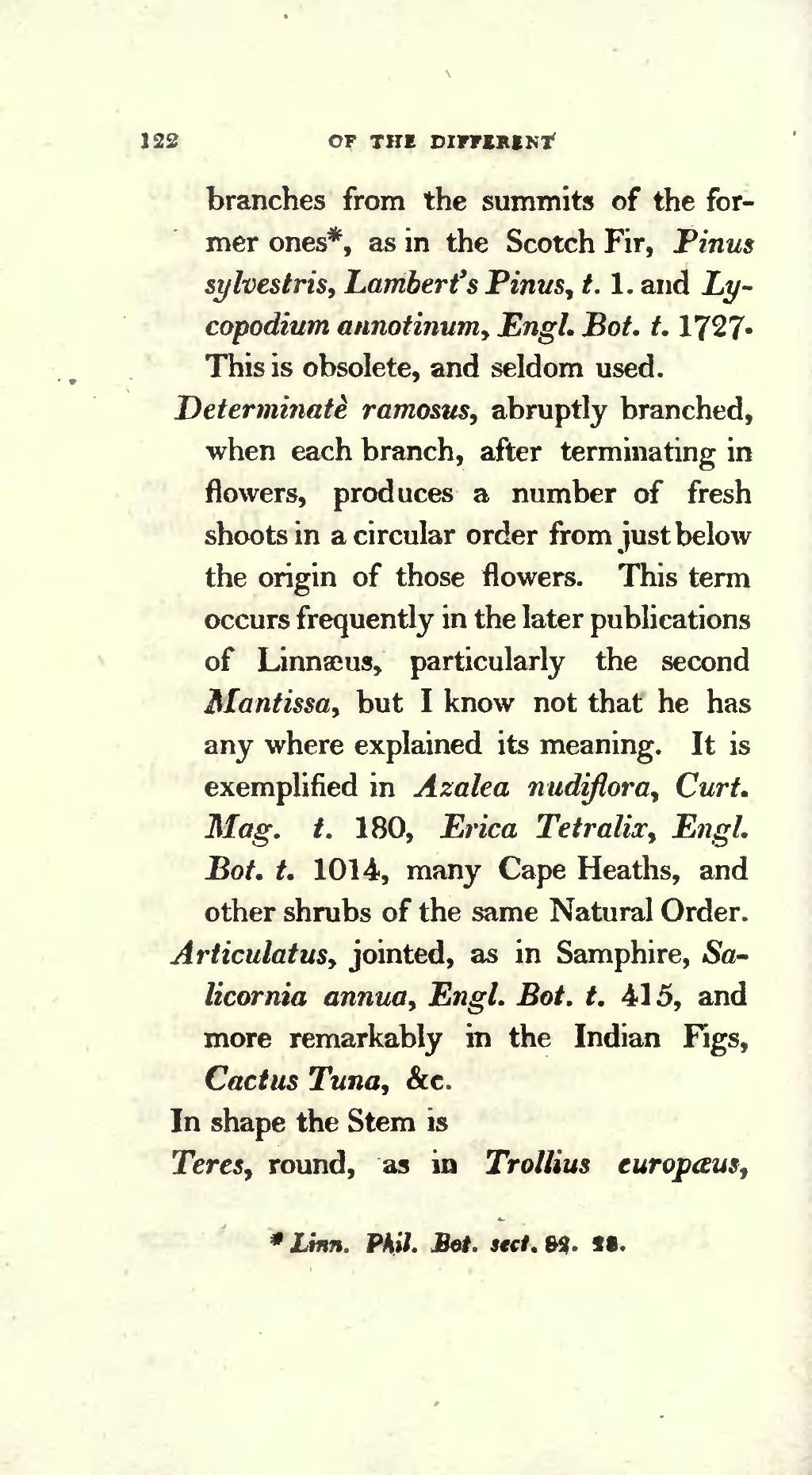branches from the summits of the former ones[1], as in the Scotch Fir, Pinus sylvestris, Lambert's Pinus, t. 1. and Lycopodium annotinum, Engl. Bot. t. 1727. This is obsolete, and seldom used.
Determinatè ramosus, abruptly branched, when each branch, after terminating in flowers, produces a number of fresh shoots in a circular order from just below the origin of those flowers. This term occurs frequently in the later publications of Linnæus, particularly the second Mantissa, but I know not that he has any where explained its meaning. It is exemplified in Azalea nudiflora, Curt. Mag. t. 180, Erica Tetralix, Engl. Bot. t. 1014, many Cape Heaths, and other shrubs of the same Natural Order.
Articulatus, jointed, as in Samphire, Salicornia annua, Engl. Bot. t. 415, and more remarkably in the Indian Figs, Cactus Tuna, &c.
In shape the Stem is
Teres, round, as in Trollius europæus,
- ↑ Linn. Phil. Bot. sect. 82. 28.
